Philippa Foot
description: an English philosopher who was one of the founders of contemporary virtue ethics, best known for her work on ethics and the problem of the trolley
21 results

How Much Is Enough?: Money and the Good Life
by
Robert Skidelsky
and
Edward Skidelsky
Published 18 Jun 2012
And this remains true whether the pleasures in question are of the “high” or “low” variety. Then there is joy. This is a state more exalted than either pleasure or happiness yet also more elusive. Pleasure and happiness can be pursued, but one would be hard put upon to pursue joy. Joy is paradoxically congruent with suffering, hence its prominence in Christian writing. Philippa Foot mentions a Quaker woman who after much hardship and persecution spoke of her “joyous life” preaching the Word. “She did not speak of her life as a happy life,” adds Foot; “it would have been puzzling if she had.”34 And if joy is compatible with the absence of happiness and pleasure, happiness and pleasure are likewise compatible with the absence of joy.
…
Deep happiness, for instance, is characterized as such not by palpitations or tremors—the mistake made by so many high-school story writers—but by its relation to certain centrally important human goods: love, childbirth, the completion of an important piece of work. “It does not make sense,” writes Philippa Foot in her excellent discussion of the subject, to suggest that someone found deep happiness in, say, a victory in a running dispute with a neighbour over a morning newspaper or a milk bottle, however much we think of “fizzy” behaviour and elation. Whereas deep happiness and joy over the birth of a child?
…
For details, see Yew-Kwang Ng, “Happiness Surveys: Some Comparability Issues and an Exploratory Survey Based on Just Perceivable Increments,” Social Indicators Research, vol. 38, pt. 1, pp. 1–27. 31. Layard, Happiness, p. 13. 32. Aristotle, Nichomachean Ethics, p. 247. 33. Ludwig Wittgenstein, Tractatus Logico-Philosophicus (London: Routledge and Kegan Paul, 1922), 6.43. 34. Philippa Foot, Natural Goodness (Oxford: Oxford University Press, 2001), p. 85. 35. Ibid., p. 88. 36. Samuel Brittan, “Commentary: A Deceptive Eureka Moment,” in Johns and Ormerod, Happiness, Economics and Public Policy, p. 93. 37. Layard, Happiness, p. 23. 38. Metropolitan Anthony of Sourozh, God and Man (London: Darton, Longman and Todd, 1983), p. 16. 39.

The Wisdom of Psychopaths: What Saints, Spies, and Serial Killers Can Teach Us About Success
by
Kevin Dutton
Published 15 Oct 2012
Trolleyology Joshua Greene, a psychologist, neuroscientist, and philosopher at Harvard University, has observed how psychopaths unscramble moral dilemmas, how their brains respond inside different ethical compression chambers. As I described in my previous book, Split-Second Persuasion, he’s stumbled upon something interesting. Far from being uniform, empathy is schizophrenic. There are two distinct varieties: hot and cold. Consider, for example, the following conundrum (case 1), first proposed by the philosopher Philippa Foot: A railway trolley is hurtling down a track. In its path are five people who are trapped on the line and cannot escape. Fortunately, you can flip a switch that will divert the trolley down a fork in the track away from the five people—but at a price. There is another person trapped down that fork, and the trolley will kill them instead.
…
, and his subsequent temporary blindness are certainly compatible with such a diagnosis—as is Saul’s own mysterious, health-related allusion (2 Corinthians. 12:7–10) to a “thorn in the flesh,” a “messenger of Satan,” “to keep me from becoming conceited.” 2 Kiehl and his coauthors also included a third type of dilemma, which they termed “impersonal.” This took the form of the original version of the Trolley Problem devised by Philippa Foot (see chapter 1), in which the choice (initiated by the flick of a switch) is whether to divert a runaway train away from its present course of killing five people onto an alternate course of killing just one. 3 Of course, such shameless disregard for the practice of monogamy leads, in turn, to sexual promiscuity … and a wider propagation of genes. 4 Henry Lee Lucas was a prolific American serial killer, once described as “the greatest monster who ever lived,” whose confessions led police to the bodies of 246 victims, 189 of whom he was subsequently convicted of murdering.
…
Cohen, “An fMRI Investigation of Emotional Engagement in Moral Judgment,” Science 293, no. 5537 (2001): 2105–08, doi:10.1126/science.1062872; Andrea L. Glenn, Adrian Raine, and R. A. Schug, “The Neural Correlates of Moral Decision-Making in Psychopathy,” Molecular Psychiatry 14 (January 2009): 5–6, doi:10.1038/mp.2008.104. 10 Consider, for example, the following conundrum (case 1) … The Trolley Problem was first proposed in this form by Philippa Foot in “The Problem of Abortion and the Doctrine of the Double Effect,” in Virtues and Vices: And Other Essays in Moral Philosophy (Berkeley: University of California Press, 1978). 11 Now consider the following variation (case 2) … See Judith Jarvis Thomson, “Killing, Letting Die, and the Trolley Problem,” The Monist 59, no. 2 (1976): 204–17. 12 Daniel Bartels at Columbia University and David Pizarro at Cornell … See Daniel M.
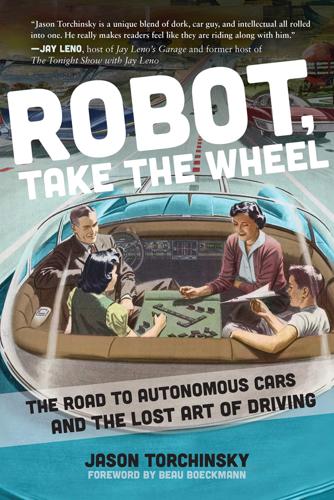
Robot, Take the Wheel: The Road to Autonomous Cars and the Lost Art of Driving
by
Jason Torchinsky
Published 6 May 2019
This means we should probably address the trolley problem first, since almost every discussion of autonomous car ethics will bring this up, and I’ve put it off as long as I could. The trolley problem⁵³ was first “officially” stated by the British philosopher, ethicist, and hilarious-name-haver Philippa Foot in 1967. Foot’s original description of the trolley problem reads like this: Edward is the driver of a trolley, whose brakes have just failed. On the track ahead of him are five people; the banks are so steep that they will not be able to get off the track in time. The track has a spur leading off to the right, and Edward can turn the trolley onto it.
…
For what it’s worth, most studies seem to suggest that people are in favor of killing fewer people to save more people.⁵⁵ Of course, there are all kinds of ridiculous ways to complicate this, with wildly hypothetical situations, like what if there were fifty geriatric and ugly Nazis on an autonomous bus and if you want to save them you must sacrifice Jeff Goldblum and a philanthropist who wants to provide free tacos and eternal kittens to the world. Would the sheer number of lives saved be the deciding factor here? Philippa Foot herself further complicated the trolley problem with this variant: George is on a footbridge over the trolley tracks. He knows trolleys, and can see that the one approaching the bridge is out of control. On the track back of the bridge there are five people; the banks are so steep that they will not be able to get off the track in time.
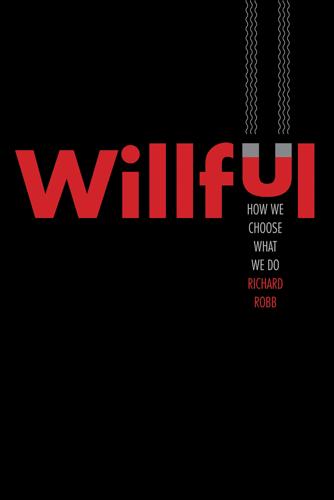
Willful: How We Choose What We Do
by
Richard Robb
Published 12 Nov 2019
Society, in deciding whether to let the government build a dam, would have to make a for-itself decision about whether the benefit of the electricity exceeds its costs to an unwilling few. Two Moral Dilemmas The distinction between purposeful and for-itself decision-making can be demonstrated by looking at two enduring moral puzzles: the merchant’s choice posed by Cicero in 44 BCE and the trolley problem posed by Philippa Foot in 1967.3 The merchant’s choice belongs in the purposeful category, where options can be evaluated, ranked, and traded. Choices in the trolley problem, however, depend ultimately on impulse—attempts to calculate the trade-offs are swamped by an individual exercise of will. Action (or inaction) is for-itself.
…
Every aspect of this debate fits into the purposeful choice framework. It’s possible to do the necessary calculations to rationally balance concern for public welfare, private gain, and ethical principles. At the opposite extreme from the merchant’s choice is the trolley problem. There are many versions of the thought experiment originally posed by Philippa Foot; in one of the most famous, five people are standing on trolley tracks with a runaway trolley car hurtling toward them. You are standing on a bridge over the tracks next to a fat man. Pushing him onto the tracks would kill him but stop the trolley and save five people.6 What might drive you to do it?
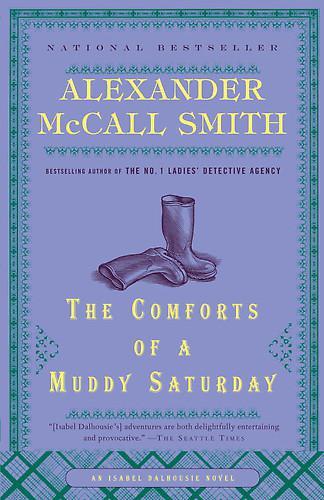
The Comforts of a Muddy Saturday
by
Alexander McCall Smith
Published 22 Sep 2008
She drew in her breath and read quickly to the bottom; there was the signature, bold as brass: Christopher Dove. She read the letter again, more slowly this time. Dear Ms. Dalhousie, I enclose with this letter an article that I have recently completed and that I think is suitable for publication in the Review. You may be familiar, of course, with the famous Trolley Problem that Philippa Foot raised all those years ago in Virtues and Vices. I have recently given this matter considerable thought and feel that I have a new approach to propose. There are a number of other editors keen to take this piece (both here and in the United States), but I thought that I would give you first option.
…
I would flick the switch. It was perfectly simple. Unless, of course, Dove and Lettuce were among the five—She stopped herself. That was an uncharitable thought, and she realised that she should not think it. But the delicious, childish fantasy came back. “It is not so simple,” Dove continued. “Since Philippa Foot first posed the problem, a number of writers have examined it in greater detail, most notably Judith Jarvis Thomson, who changed the conditions of the thought experiment by taking out the spur line and introducing an innocent fat man. This fat man is on a bridge directly above the trolley line.
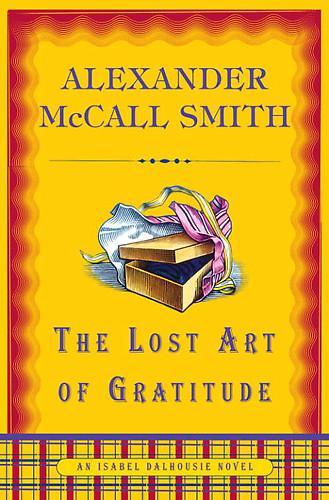
The Lost Art of Gratitude
by
Alexander McCall Smith
Published 21 Sep 2009
Such circles wanted complexity, dysfunction and irony: there was no room for joy, celebration or pathos. But where was the fun in that? She answered his question. “We probably do. We want resolution and an ending that shows us that the world is a just place. We’ve always wanted that. We want human flourishing, as Philippa Foot would put it.” “One of your philosophers?” “Yes, Professor Philippa Foot. She wrote a book called Natural Goodness. I would offer to show it to you had I not just agreed not to burden you with philosophy.” “I like the sound of her,” said Jamie. “Professor Foot. Is she naturally good?” “I think she is,” said Isabel. “Though usually people who are naturally good have to work at it.

Driverless: Intelligent Cars and the Road Ahead
by
Hod Lipson
and
Melba Kurman
Published 22 Sep 2016
When we give talks to audiences about the value and potential impact of driverless cars, inevitably someone at the back of the room will raise his hand and ask a variation of this question: “If faced with a fatal situation, how will a driverless car decide between whether it will kill two babies next to the roadside, or all five adult passengers inside the car?” While raised in a new context, this ethical choice question is actually an old chestnut, a variant of the well-known Trolley Problem4 that students in philosophy classes have discussed for decades. The Trolley Problem, conceived by Philippa Foot in 1967, describes the ethical conundrum of “a driver of a runaway tram [who] can steer only from one narrow track onto another; five men are working on one track and one man on the other; anyone on the track he enters is bound to be killed.” Most people will do the simple utilitarian calculation that five lives are worth more than one, and consider this a no-brainer.
…
Henry Miller and Shih-lung Shaw, Geographic Information Systems for Transportation: Principles and Applications (New York: Oxford University Press, 2001). 2. Alexis Madrigal, “How Google Builds Its Maps and What It Means for the Future,” The Atlantic, September 2012. 3. “Summary of Travel Trends 2009,” National Household Travel Survey, http://nhts.ornl.gov/2009/pub/stt.pdf 4. Philippa Foot, The Problem of Abortion and the Doctrine of the Double Effect in Virtues and Vices (Oxford: Basil Blackwell, 1978) (originally appeared in the Oxford Review, no. 5, 1967). 5. Noah J. Goodall, “Ethical Decision Making during Automated Vehicle Crashes,” Transportation Research Record: Journal of the Transportation Research Board, 2014. 12 The Ripple Effects Now that we’ve nearly reached the end of this book, we would like to bring up an issue that any in-depth exploration of driverless cars would be incomplete if it did not address: the topic of hype.
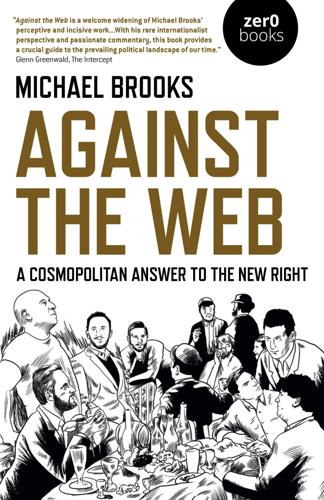
Against the Web: A Cosmopolitan Answer to the New Right
by
Michael Brooks
Published 23 Apr 2020
According to my friend Ben Burgis, the author of Give Them An Argument: Logic for the Left, a thought experiment generally refers to two things: first, an imaginary situation designed to test whether a certain definition of a concept captures what we really mean by it, and second, an imaginary situation in which we bring two moral principles into conflict in order to discover which one we care more about. The most famous thought experiment is the so-called “Trolley Problem,” which was originally formulated by the British philosopher Philippa Foot, though the version that most people are familiar with incorporates a change suggested by the American philosopher Judith Jarvis Thomson. Here’s Foot’s original example: Edward is the driver of a trolley whose breaks have just failed. On the track ahead of him are five people; the banks are so steep that they are not able to get off the track in time.
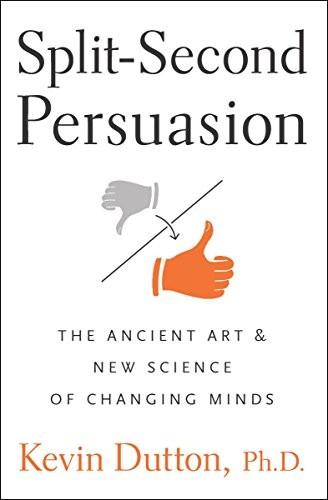
Split-Second Persuasion: The Ancient Art and New Science of Changing Minds
by
Kevin Dutton
Published 3 Feb 2011
I’ve got hidden shallows.’ Right Track? 4The comparison between psychopaths and non-psychopaths with regard to hot and cold empathy may best be illustrated through the results of brain-imaging studies. 5Consider, for example, the following scenario (Case 1), first proposed by the British moral philosopher Philippa Foot. A trolley is running out of control down a track. In its path are five people who have been tied to the track by a mad philosopher. Fortunately, you can flick a switch that will lead the trolley down a fork in the track to safety. Unfortunately, there is a single person tied to that fork. Question: Should you hit the switch?
…
Annals of the New York Academy of Sciences 1121 (2007): 461–479. For a less specialised account see Carl Zimmer ‘Whose Life Would You Save?’ Discover (April 2004). http://discovermagazine.com/2004/apr/whose-life-would-you-save (accessed January 9th, 2007). 5 Consider, for example … The Trolley Problem was first proposed in this form by Philippa Foot in ‘The Problem of Abortion and the Doctrine of the Double Effect’. In Virtues and vices and other essays in moral philosophy (Berkeley, CA: University of California Press, 1978). 6 Now consider the following … Thomson, Judith J. ‘Killing, Letting Die, and the Trolley Problem.’ The Monist 59 (1976): 204–17.

The Great Mental Models: General Thinking Concepts
by
Shane Parrish
Published 22 Nov 2019
Ahead of you are five people who will die should your trolley continue on the track. At the last moment you notice a spur that has one person on it. What do you do? Do you continue on and kill the five, or do you divert and kill the one? This experiment was first proposed in modern form by Philippa Foot in her paper “The Problem of Abortion and the Doctrine of the Double Effect,”3 and further considered extensively by Judith Jarvis Thomson in “The Trolley Problem.”4 In both cases the value of the thought experiment is clear. The authors were able to explore situations that would be physically impossible to reproduce without causing serious harm, and in so doing significantly advanced certain questions of morality.

Machines of Loving Grace: The Quest for Common Ground Between Humans and Robots
by
John Markoff
Published 24 Aug 2015
You can save these five people by diverting the trolley onto a different set of tracks that has only one person on it, but that person will be killed. Is it morally permissible to turn the trolley and thus prevent five deaths at the cost of one? First posed as a thought problem in a paper about the ethics of abortion by British philosopher Philippa Foot in 1967, it has led to endless philosophical discussions on the implications of choosing the lesser evil.9 More recently it has been similarly framed for robot vehicles deciding between avoiding five schoolchildren who have run out onto the road when the only option is swerving onto the sidewalk to avoid them, thus killing a single adult bystander.
…
_php=true&_type=blogs&_r=0. 8.Lawrence D. Burns, William C. Jordan, and Bonnie A. Scarborough, “Transforming Personal Mobility,” The Earth Institute, Columbia University, January 27, 2013, http://sustainablemo bility.ei.columbia.edu/files/2012/12/Transforming-Personal-Mobility-Jan-27-20132.pdf. 9.William Grimes, “Philippa Foot, Renowned Philosopher, Dies at 90,” New York Times, October 9, 2010, http://www.nytimes.com/2010/10/10/us/10foot.html. 10.“Transportation and Material Moving Occupations,” Occupational Outlook Handbook, Bureau of Labor Statistics, http://www.bls.gov/ooh/transportation-and-material-moving/home.htm. 11.Vannevar Bush, “As We May Think,” Atlantic Monthly, July 1, 1945, http://www.theatlantic.com/magazine/archive/1945/07/as-we-may-think/303881. 12.Peter Norvig, keynote address, NASA Innovative Advanced Concepts Conference, Stanford, California, February 5, 2014. 3|A TOUGH YEAR FOR THE HUMAN RACE 1.John Markoff, “Skilled Work, without the Worker,” New York Times, August 18, 2012, http://www.nytimes.com/2012/08/19/business/new-wave-of-adept-robots-is-changing-global-industry.html. 2.Ibid. 3.Norbert Wiener, Collected Works with Commentaries, ed.
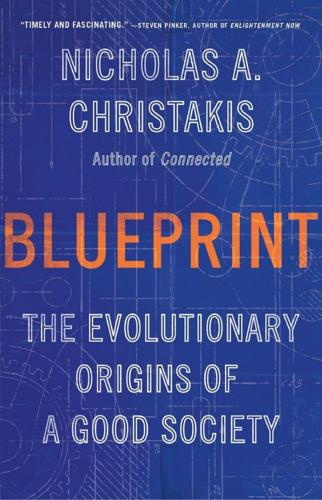
Blueprint: The Evolutionary Origins of a Good Society
by
Nicholas A. Christakis
Published 26 Mar 2019
From this perspective, these natural constraints and definitions can stop an otherwise endless relativistic moral regress.61 We could say that a society is good when it enhances its members’ happiness or survival. Such are the constraints against which both evolution and morality abut. This, too, is an ancient idea, at least as old as Plato and Aristotle. Philosopher Philippa Foot famously and provocatively said, “In moral philosophy it is useful, I believe, to think about plants.”62 She argued that there is no fundamental difference between a notion of “good,” whether the topic is a tree having “good roots” or people being in a “good” state. The roots have a purpose, a logical constraint that they must satisfy, which sets the standard for deciding whether they are good or not.
…
Hume, “Concerning Moral Sentiment,” appendix 1 in An Enquiry Concerning the Principles of Morals (London: A. Millar, 1751), p. 289. 59. Taken from a documentary featuring a conversation between Iris Murdoch and David Pears that was part of the TV series Logic Lane (1972), directed by Michael Chanan; cited in N. Krishna, “Is Goodness Natural?,” Aeon, November 28, 2017, https://aeon.co/essays/how-philippa-foot-set-her-mind-against-prevailing-moral-philosophy. 60. R. M. Hare, The Language of Morals (Oxford: Clarendon Press, 1952). 61. D. Gilbert, Stumbling on Happiness (New York: Knopf, 2016). 62. P. Foot, cited in R. Hursthouse, On Virtue Ethics (Oxford: Oxford University Press, 2002), p. 196. See also P.

On the Edge: The Art of Risking Everything
by
Nate Silver
Published 12 Aug 2024
Transit officials faced a difficult choice: they could shut down the F, blocking a vital link between New York’s two densest boroughs right as commuters were beginning to get off work—or they could potentially run over poor Dakota. They elected to close the F for more than an hour until Dakota was found. Dakota’s story was a real-world example of what philosophers call a trolley problem, a moral dilemma first posed by the philosopher Philippa Foot in 1967. The original version was this: You’re driving a trolley that is speeding along the tracks, when to your horror you discover that the brakes are out. If you continue onward, five transit workers on the track ahead will be killed. Alternatively, you can divert the train to a spur. There’s a worker there too, and he’ll be killed, but there’s just one of him and not five people.
…
Trimmed mean: The mean after a specified proportion of the highest and lowest values are clipped off. A good working compromise between the mean and the median. Trinity or Trinity test: The code name for the test that resulted in the first successful detonation of an atomic bomb during the Manhattan Project. Trolley problem: A moral dilemma first proposed by the philosopher Philippa Foot. The original version involved a trolley that had lost its brakes and was on a collision course to kill some number of track workers, but that could be diverted to a different track to kill some smaller number of workers. Many creative variations have followed, serving as thought experiments to explore different precepts of moral reasoning.

The Road to Conscious Machines
by
Michael Wooldridge
Published 2 Nov 2018
Although it wasn’t intended as a serious ethical framework for AI, we can see it as the ancestor of a whole host of such frameworks that have appeared alongside the recent growth of AI, and have been the subject of serious research.6 In the remainder of this chapter, we will survey this work, and discuss whether or not it is heading in the right direction. We’ll begin our survey with one particular scenario which has attracted more attention in the ethical AI community than perhaps any other. The Trolley Problem is a thought experiment in the philosophy of ethics, originally introduced by British philosopher Philippa Foot in the late 1960s.7 Her aim in introducing the Trolley Problem was to disentangle some of the highly emotive issues surrounding the morality of abortion. There are many versions of Foot’s trolley problem, but the most common version goes something like this (see Figure 21): A trolley (i.e. a tram) has gone out of control, and is careering at high speed towards five people who are unable to move.

System Error: Where Big Tech Went Wrong and How We Can Reboot
by
Rob Reich
,
Mehran Sahami
and
Jeremy M. Weinstein
Published 6 Sep 2021
For example, when confronted with a choice about whether to swerve into a bicycle lane to protect the car’s driver or to harm parents bicycling with their children, what should the autonomous system that pilots the car be programmed to do? Consider a hypothetical dilemma introduced by the English philosopher Philippa Foot in the late 1960s, the “Trolley Problem,” that has now become a real problem for engineers. In the context of autonomous cars, the problem asks whether a vehicle should be programmed to endanger or sacrifice the life of its sole passenger by running off the road in order to avoid potentially hitting five pedestrians crossing the road.
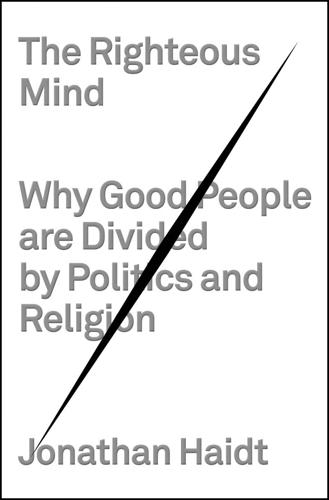
The Righteous Mind: Why Good People Are Divided by Politics and Religion
by
Jonathan Haidt
Published 13 Mar 2012
You can view the puppet shows from links at www.yale.edu/infantlab/In_the_Media.html. This technique of measuring infants’ attributions was first developed by Kuhlmeier, Wynn, and Bloom 2003. 37. Hamlin, Wynn, and Bloom 2007, p. 559. 38. For early writings on this idea, see Hoffman 1982; Kagan 1984. 39. The trolley dilemma was first discussed by philosophers Philippa Foot and Judith Jarvis Thompson. 40. Some philosophers note the difference that in the bridge story you are using the victim as a means to an end, whereas in the switch story the victim is not a means to an end; his death is just an unfortunate side effect. Greene and others have therefore tested alternative versions, such as the case where the switch only saves lives because it diverts the trolley onto a side loop where one man is standing.

Robot Rules: Regulating Artificial Intelligence
by
Jacob Turner
Published 29 Oct 2018
. … It is thanks to this decoupling that AI can colonise tasks whenever this can be achieved without understanding, awareness, sensitivity, hunches, experience or even wisdom. In short, it is precisely when we stop trying to reproduce human intelligence that we can successfully replace it. Otherwise, AlphaGo would have never become so much better than anyone at playing Go.103 In philosopher Philippa Foot’s famous “Trolley Problem”104 thought experiment, participants are asked what they would do if they saw a train carriage (a trolley), heading down railway tracks, towards five workmen who are in the train’s path and would not have a chance to move before being hit. If the participant does nothing, the train will hit the five workmen.

Lifespan: Why We Age—and Why We Don't Have To
by
David A. Sinclair
and
Matthew D. Laplante
Published 9 Sep 2019
The pilots have it locked in; their missiles are ready. The plane is running out of gas. The fate of the passengers, and the entire United States, rests upon your orders. What do you do? This, of course, is a “trolley problem,” an ethical thought experiment, of the type popularized by the philosopher Philippa Foot, that pits our moral duty not to inflict harm on others against our social responsibility to save a greater number of lives. It’s also, however, a handy metaphor, because the highly contagious disease the passengers are carrying is, as you doubtless have noticed, nothing more than a faster-acting version of aging.

Future Politics: Living Together in a World Transformed by Tech
by
Jamie Susskind
Published 3 Sep 2018
David Hume, ‘Of the Original Contract’, in Selected Essays (Oxford: Oxford University Press, 2008), 283. 43. See Manuel Castells, Communication Power (Oxford: Oxford University Press, 2013), 43–5. 44. Aaron Perzanowksi and Jason Schultz, The End of Ownership: Personal Property in the Digital Economy (Cambridge, Mass: MIT Press, 2016), 4. 45. See Philippa Foot, ‘The Problem of Abortion and the Doctrine of the Double Effect’, in Virtues and Vices and Other Essays in Moral Philosophy (Oxford: Oxford University Press, 2009). 46. Lessig, Code 2.0, 78. 47. Elizabeth Anderson, Private Government: How Employers Rule Our Lives (and Why We Don’t Talk About It) (Princeton and Oxford: Princeton University Press, 2017), 55. 48.
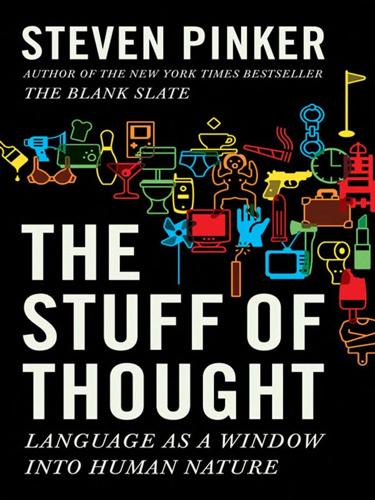
The Stuff of Thought: Language as a Window Into Human Nature
by
Steven Pinker
Published 10 Sep 2007
The semantic distinction between after and from points to a causal distinction between succession and impingement, which in turn animates a moral distinction between tragedy and evil. Another force-dynamic distinction, the one between causing and letting, deeply penetrates our moral reasoning. The difference is exposed in the trolley problem, a famous thought experiment devised by the philosopher Philippa Foot that has long been a talking point among moral philosophers. 141 A trolley is hurtling out of control and is bearing down on five railroad workers who don’t see it coming. You are standing by a switch and can divert the trolley onto another track, though it will then kill a single worker who hasn’t noticed the danger either.

Behave: The Biology of Humans at Our Best and Worst
by
Robert M. Sapolsky
Published 1 May 2017
* But what if the monkey chooses the two-marshmallow option over the marshmallow/celery one because, well, having any sort of situation with two marshmallows on the scene was just so much more exciting? The authors did a nice control—when there was no monkey in the adjacent space, the choice would be random as to what food was deposited in the second space. * Actually, the trolley problem was invented by the British philosopher Philippa Foot in 1967. * And as alluded to earlier, people with vmPFC damage are strongly and equally willing to pull the lever or push the person. You see the same if you give people a benzodiazepine (a tranquilizer like Valium). The vmPFC and amygdala are calmed down (both by direct actions of the drug and secondarily via damping of the sympathetic nervous system), and people are more willing to push